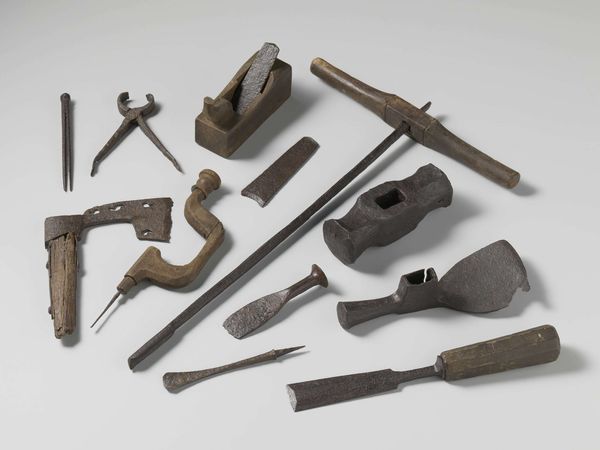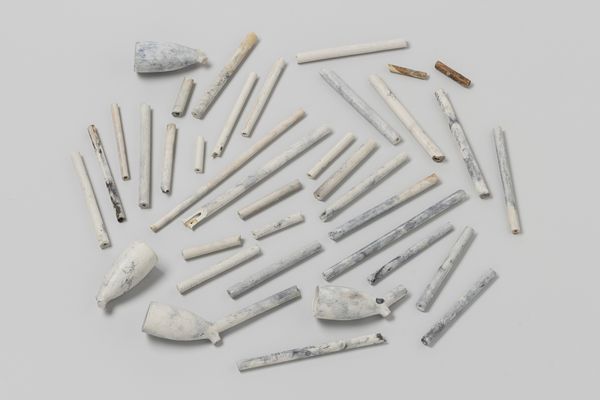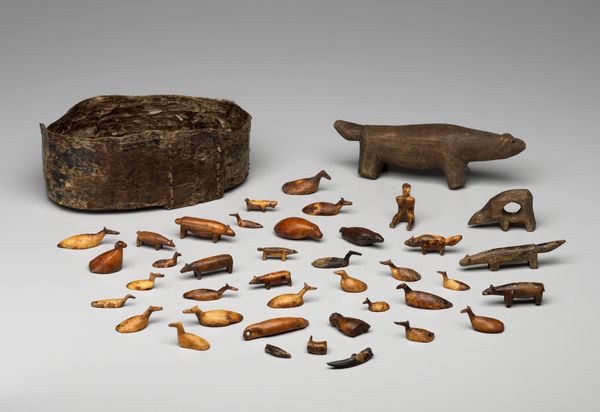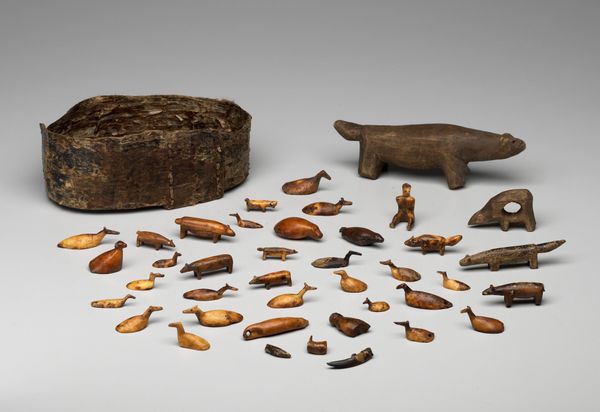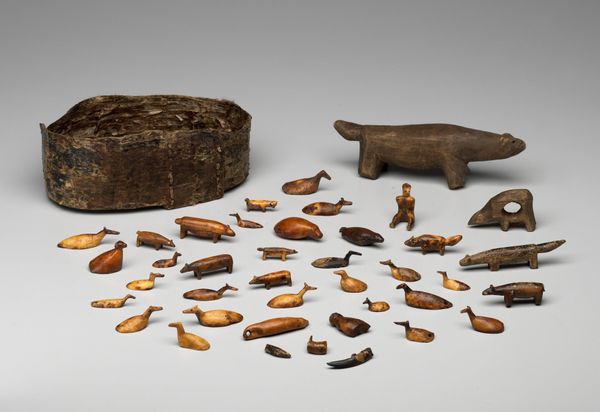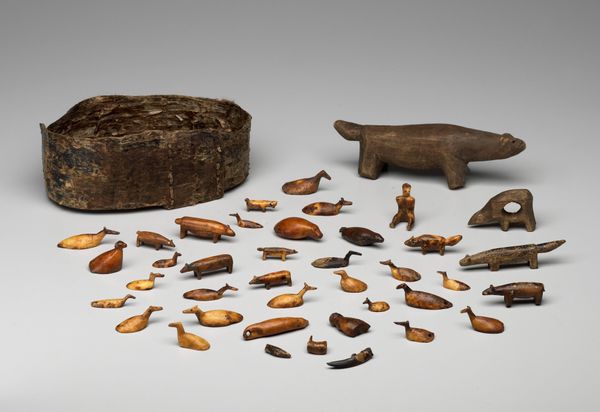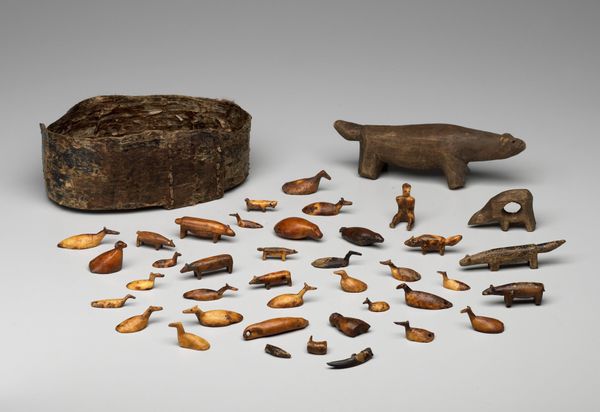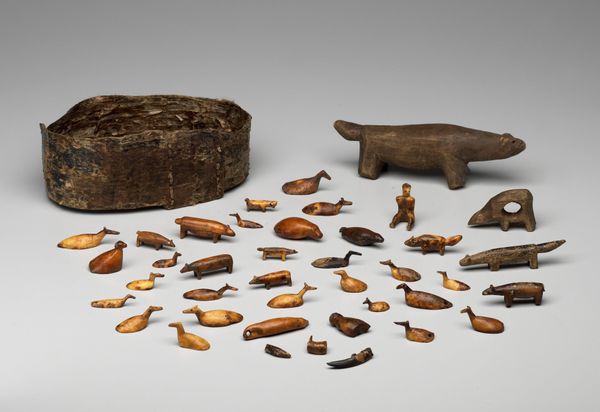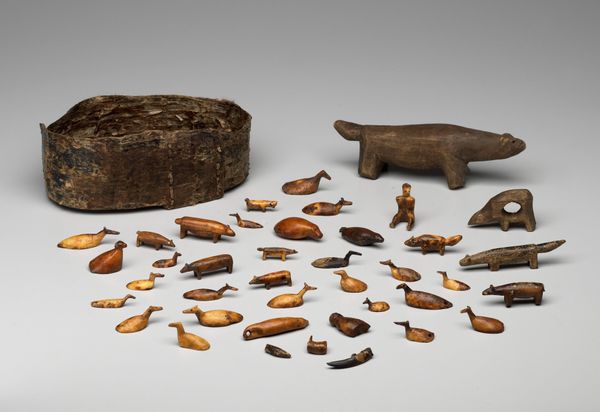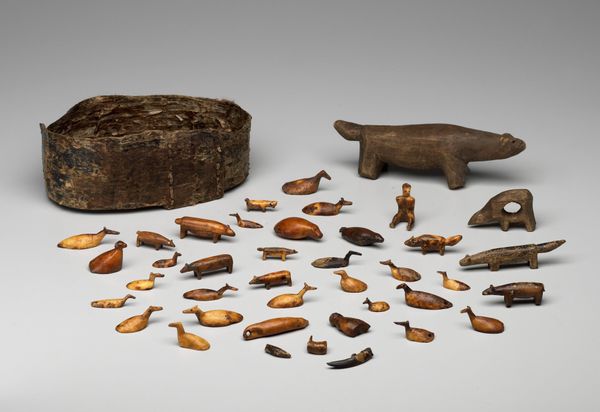
metal, wood
#
metal
#
organic shape
#
11_renaissance
#
wood
Dimensions: height 4.5 cm, length 20.3 cm, width 15.3 cm
Copyright: Rijks Museum: Open Domain
Curator: What a spread of ferrous remains! I’m struck by their austere beauty, the somber shades of aged iron. They suggest a history, a tale of use and disuse, or, dare I say, even abandonment. Editor: I love how blunt and mysterious it is. “Doosje met dertien stukjes ijzer en drie stukjes hout"—A Box with Thirteen Pieces of Iron and Three Pieces of Wood. That’s what the Rijksmuseum calls this assemblage from around 1590-1596. Curator: Indeed! An inventory masked as art, or is it? Note the assortment; various shapes each with an enigmatic purpose all cast in rusty metal, a universal symbol of labor, protection, and endurance since the Iron Age. Editor: Yeah, but why are they presented like this? I keep imagining them spilling out of a carpenter's toolbox like remnants after the job is done. I find their blunt presentation unexpectedly compelling, sort of an archeology of the everyday. They were found in the Netherlands after all so it's fair to assume that they probably had a specific purpose on some boat at that time, given its powerful history on the seas. Curator: Fascinating reflection. Let’s probe this a bit more, if we look at this through an archetypal lens, beyond utilitarian interpretations we start to find something more profound. This assembly embodies resilience and represents tools or implements of work, each is a reminder of skill, craft, and cultural resilience— the fortitude of the Dutch during this time. Consider each component, the metal pieces speaking to innovation; wood speaks of building traditions deeply interwoven with nature. They echo persistence against the sea's tempestuous moods or reflect peaceful life inland Editor: I guess so but It could also be simply remnants discarded, yet still bearing vestiges of form. Curator: Perhaps the artist anonymous as they may be meant these pieces to act as memory repositories, physical reminders of a forgotten craft and a lifestyle transformed. We’re merely spectators contemplating the past trying desperately to find relevance. Editor: Yes, the artist allows us to find our meaning with simple shapes. It speaks without speaking Curator: Indeed. Such works help forge paths where past becomes part of present experience thereby enabling us perceive cultural continuity while stimulating personal nostalgia for what came before Editor: Well, there’s power in suggestion rather than clarity— I walked away learning things.
Comments
No comments
Be the first to comment and join the conversation on the ultimate creative platform.
